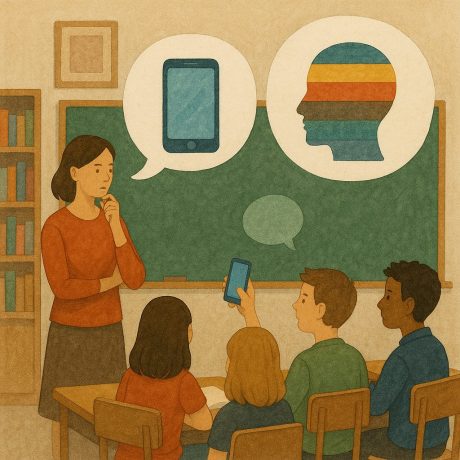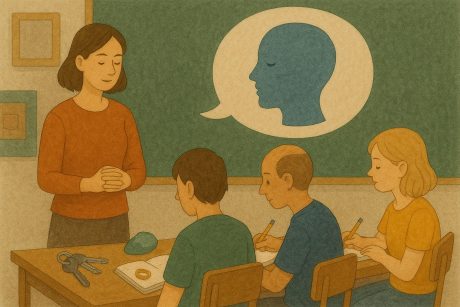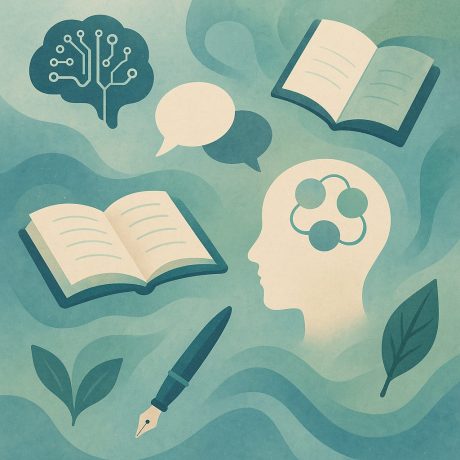
The 2025 NATE (National Association for the Teaching of English) conference was a vibrant gathering of minds and voices shaping the future of English: classroom teachers, academics, publishers, educational entrepreneurs, and teacher-educators came together to share practice, debate ideas, and build community. The atmosphere buzzed with both continuity and change. Alongside familiar figures like Gary Snapper (editor of Teaching English) and John Hodgson (editor of English in Education), a new generation of educators stepped forward: diverse, dynamic, and deeply committed to humane and creative pedagogy.
As someone who educators teachers, from diverse backgrounds, through the MA in Creative Writing and Education at Goldsmiths, and whose recent book The Mindful Creative Writing Teacher (Gilbert, 2025) champions reflective and inclusive writing practices, I found the day powerfully affirming. These five takeaways reminded me why English education remains a vital, evolving force in schools and beyond.
1. Metaphor Is a Pedagogical Superpower

A highlight was Clare Lawrence‘s session on poetic metaphor and transcription. As Associate Professor of Participatory Autism Research and English PGCE lead at Bishop Grossteste University, Lincoln, Lawrence invited us to explore metaphors for our professional and creative identities. I found myself returning to the image of English teaching as a wave—sweeping together the discourses of literature, culture, identity, and power, and breaking over students to leave a shimmering lagoon of learning. Others offered equally powerful images, but perhaps the most memorable came from Clare herself: the process of creative writing is like boiling red lentils; a foamy scum rises to the top and must be skimmed off to leave a rich, distilled broth beneath.
Lawrence also demonstrated how metaphor can reinvigorate ‘dry’ classroom materials. Transforming a standard revision worksheet on An Inspector Calls into a poetic transcription task, she offered a compelling model for creative recontextualisation. Such approaches exemplify the shift from surface to deep learning: what McCaw (2019) might call the move from ‘thin’ to ‘thick’ mindfulness in pedagogy. It reminded me of the importance of metaphor in helping learners make emotionally resonant and cognitively meaningful connections.
2. Generation Alpha Demands a New Kind of Pedagogy

In conversations between sessions, Secondary English for Generation Alpha: Humane Pedagogy for Local, National and International Contexts (Routledge/NATE, 2025) emerged as a central talking point. This cohort (born after 2010 and native to mobile technologies) requires pedagogies that honour their lived experiences, digital fluency, and diverse knowledge worlds. My own chapter in the volume focuses on personal language histories as a tool for empowerment, encouraging students to reflect on how their everyday language use shapes identity and community.
The implications for teacher education are profound. At Goldsmiths, our MA foregrounds these emerging pedagogies: relational, reflective, and inclusive. We ask students not only to consider how they teach but who they are when they teach, and how creative writing can be a space for social and emotional learning, not just skills acquisition.
3. Mindful Creative Writing Resonates

I was fortunate to lead a workshop on mindful creative writing, grounded in the practices explored in The Mindful Creative Writing Teacher. We began with a short sensory meditation on everyday objects—inviting delegates to engage in ‘noticing’ rather than ‘narrating’—before moving into freewriting. One teacher told me, “It was so helpful that you said we didn’t have to share or worry about grammar. It made it liberating.” That, in essence, is the heart of mindful creative writing: creating a permissive space for emotional honesty and exploratory language (Gilbert, 2025, p. 141).
We then developed fictional characters based on the many evocative objects in the room: sea glass, keys, a dinosaur keyring, a mother’s ring. After naming these characters and assigning them age and backstory, participants created dramatic dialogues where the objects had been lost or taken. The emotional and imaginative depth of the resulting exchanges was moving. One delegate described it as a “brilliant workshop”; others noted how easily they could apply it in their classrooms.
4. We Are Not Alone in This Work

The plenary sessions reminded us that, despite systemic pressures and exam-oriented curricula, there is a powerful collective momentum for change. Across workshops on AI, drama, decolonising literature, and ecological writing, I sensed a growing commitment to pedagogies that are humanising, progressive, technologically-informed and hopeful.
Anthony Cockerill, NATE’s director, captured this well in his closing remarks: teachers want more than to ‘deliver’ English; they want to co-create it with their students. At Goldsmiths, we see this same drive in our MA cohorts: educators eager to forge new paths, challenge dominant paradigms, and cultivate deeper learner engagement through writing.
5. NATE Is a Vital Community for Creative Educators

Finally, what stood out most was the sense of solidarity. Too often, professional development can feel performative or transactional. This conference felt generative. As one delegate put it, “I’m leaving with ideas I can actually use—tomorrow.” That pragmatic creativity, underpinned by research and rooted in practice, is what keeps English teaching alive and evolving.
It also reminded me why I wrote The Mindful Creative Writing Teacher—to document and celebrate precisely this kind of work, and to offer a toolkit for educators seeking to teach writing with authenticity, care, and imaginative risk (Gilbert, 2025, p. 3).
If you’re interested in developing your own creative writing pedagogy through research, reflection, and practical application, do explore our MA in Creative Writing and Education at Goldsmiths. We welcome teachers, writers, and educators from a wide range of backgrounds—especially those who believe, like many at NATE, that English still has the power to change lives.
References
Gilbert, F. (2025). The Mindful Creative Writing Teacher. London: FGI Publishing.
McCaw, C. T. (2019). Mindfulness ‘thick’ and ‘thin’— a critical review of the uses of mindfulness in education. Oxford Review of Education, 46(2), 257–278. https://doi.org/10.1080/03054985.2019.1667759
Smith, L. (editor & author) Secondary English for Generation Alpha: Humane Pedagogy for Local, National and International Contexts (2025).. Abingdon: Routledge.


Leave a Reply